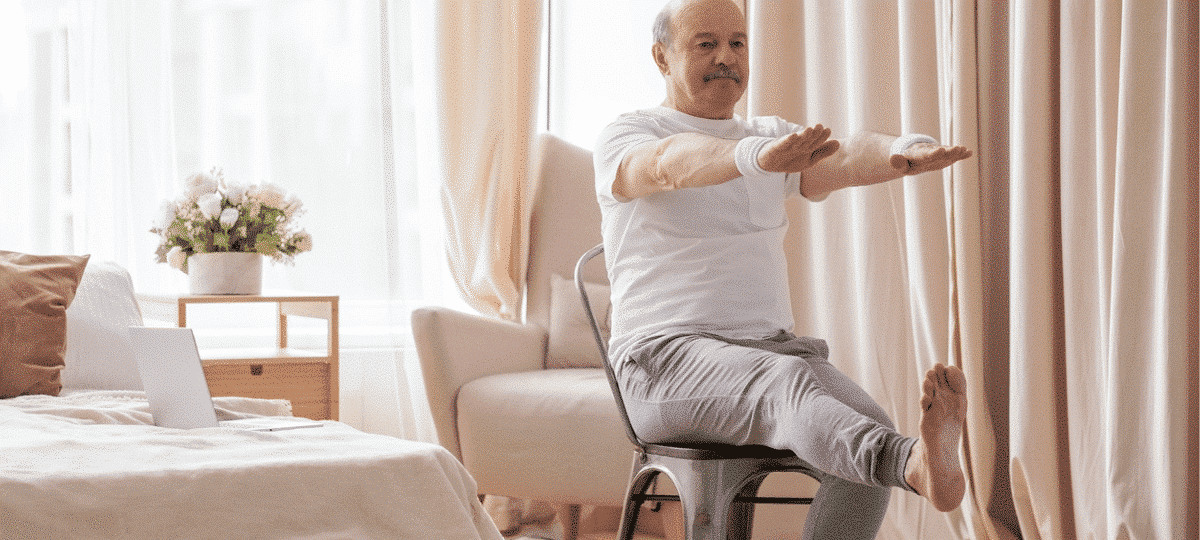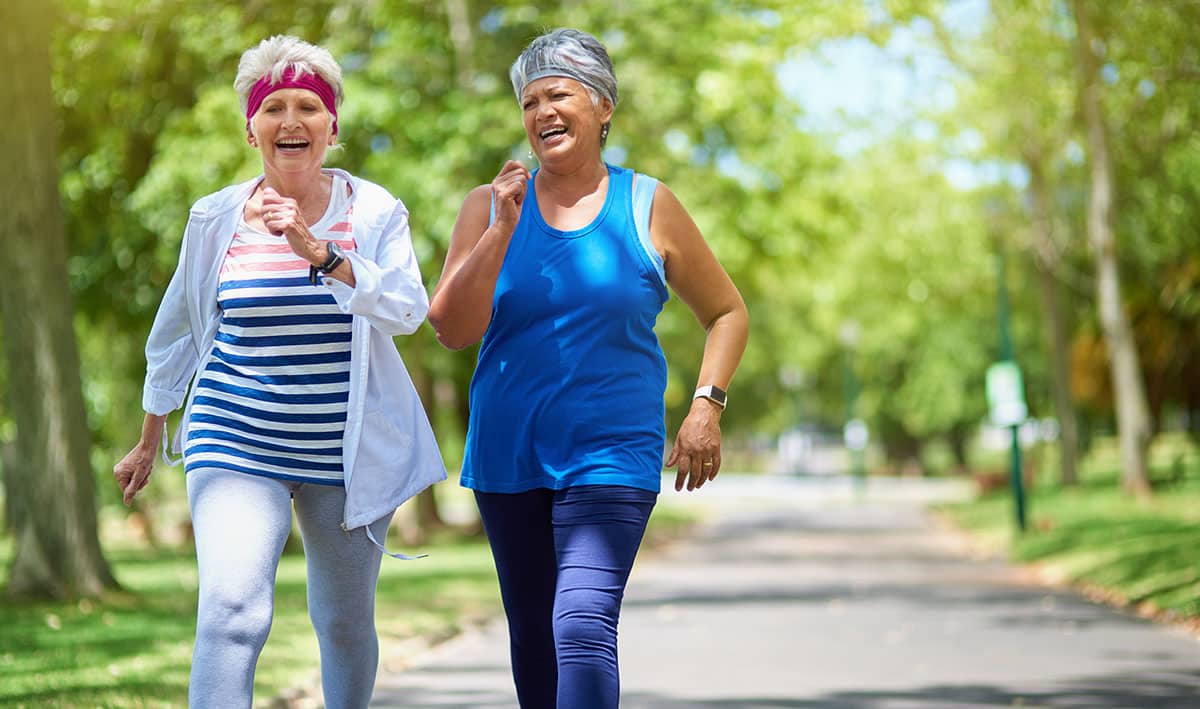Experts agree that older adults can gain tremendous benefits from low-impact workouts, including better sleep, reduced anxiety, and a lowered risk of serious illnesses like heart disease, Type II diabetes, and depression.
It’s also well known that a low-impact workout routine improves balance, builds muscle, and boosts energy levels, which are so important to a better quality of life for seniors.
Routine exercises that improve strength and flexibility have another huge upside, too: it’s the best way to help us stay independent and reduce the risk of a fall — which is hugely important to extending the quality of life for aging adults.
Understanding Low-Impact Workouts
Low Impact Workouts are Convenient and Safe
Healthcare professionals advise healthy older adults to engage in low-impact workouts three times a week.
Even if you don’t go out very often, there are low-impact workouts for seniors at home that don’t require a lot of open space, moving around, or complicated equipment. If you can afford it, hire a personal trainer who specializes in working with older adults to help you develop an in-home workout routine that makes sense for you.
Following are a few Q&As based on CDC recommended guidelines to help plan a simple, low impact workout routine that works for you:
What is a Low Impact Workout?
A low-impact workout is a mix of aerobic exercise and muscle-building activities that put less pressure on the joints, making them easier to do. A mix of aerobic activities and weight training is ideal to get your heart rate up, improve strength, and build muscle.
How long should a low-impact workout routine be for an older adult?
It’s always a good idea to talk to your healthcare provider about an exercise program tailored to your needs and conditions.
As a general guideline, though, the CDC recommends “150 minutes each week of moderate-intensity aerobic activity or 75 minutes each week of vigorous-intensity aerobic activity or a combination of both; one minute of vigorous activity equals about 2 minutes of moderate activity.”
If you are able to keep going beyond this recommended time for low-impact aerobic activity, the mind and body health benefits will also increase.
What are some good low-impact exercises for older adults?
Activities that qualify as low impact aerobics include walking, jogging, yoga, swimming laps, bike riding, dancing, and outdoor sports like tennis, pickleball, or basketball.
Strength-building exercises focus on working the major muscle groups in your hips, thighs, legs, back, abdomen, chest, arms, and shoulders for two or more days per week. Chair exercises, resistance training, and small weights are all great ways to increase muscle and build strength. Here are 14 strength, coordination & balance exercises you can try.
Group exercises can help older adults stay connected
Participation in group exercise programs can provide stimulation that helps fight the feelings of loneliness and isolation many older adults report feeling. Most senior centers and many community centers offer low-impact exercise classes created especially for adults over age 65. Some even offer chair-based classes for those with limited mobility; alternatively, consider inviting friends over for group chair exercises you can all do together in the comfort of home.
How else can older adults improve their quality of life to feel better, longer?
Active seniors can also extend their quality of life by using a wearable medical alert system for additional security, making it possible to get help immediately if you do fall or experience an injury — providing peace of mind to you and your family members.
Don’t disregard professional medical advice, or delay seeking it, because of what you read here. This information is not intended as a substitute for professional consultation, diagnosis or treatment; it is provided “as is” without any representations or warranties, express or implied. Always consult a healthcare provider if you have specific questions about any medical matter, and seek professional attention immediately if you think you or someone in your care may be experiencing a healthcare condition or medical emergency.




